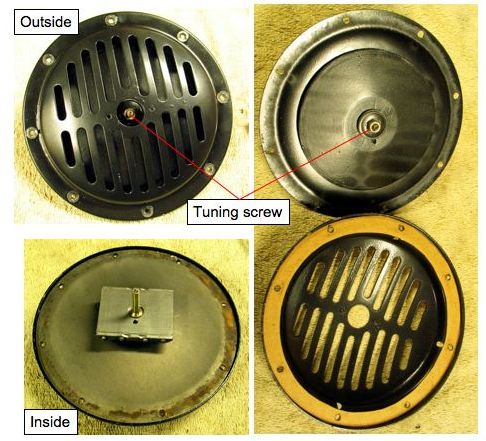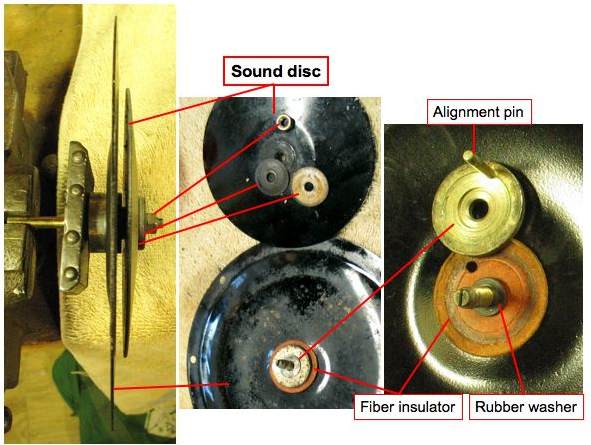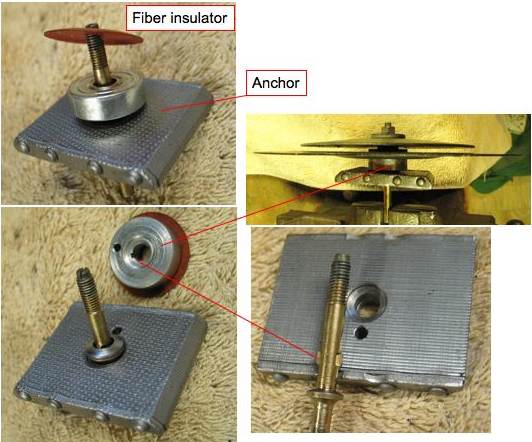After cleaning, painting and replacing the paper (fiber) gaskets I mounted the horns again and when I tried to test them -- no sound but fuse #2 blew![:0]
Checking with an Ohm meter revealed that one horn had a short from the terminals to the center bolt but not the other although I thought that I had assembled them identically. Comparing the sequence of the inner parts indicated that the rubber washer shown in
gwuisman parts picture was in the wrong place in the defective horn.
So to save others some time who might want to refurbish those horns here are some details of the assembly.
The horn can be separated into 2 parts by removing the 8 screws on the periphery, the outer part with the tuning screw and the sound disc and the inner part containing the electromagnet.
Separating the cover (with slits) from the dividing plate allows acces to the sound disc.

The sound disc is held inplace by a hex nut and 2 washers. Behind the disc is a brass ring with an off-center alignment pin. This ring is separated from the dividing plate by a rubber washer and an insulating fiber disc.
-- On the horn with the short I had switched the rubber washer and the insulator - ouch! --

On the other side of the dividing plate is another fiber insulator, followed by a spacer collar that has a slot which locks the wings of center bolt (that acts as a tuning screw) in place. A coned washer separates the anchor from the collar. All these parts have an off-center hole for the alignment pin.
So, assembly is pretty easy since all the parts fit together like a jigsaw puzzle - as long as the sequence is correct!

Alfred
1966 blue 230SL automatic